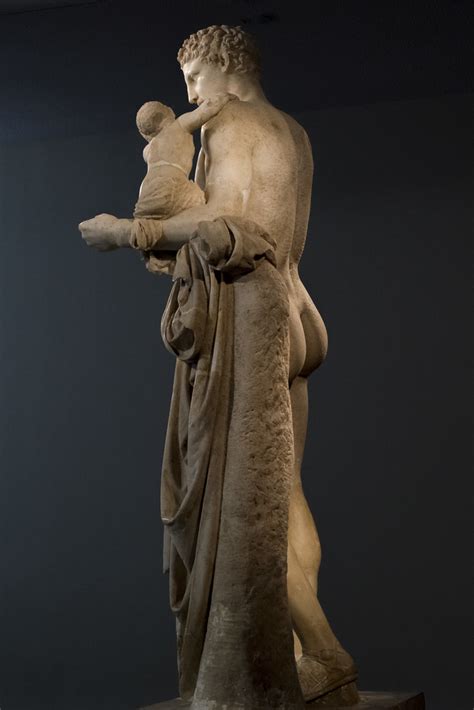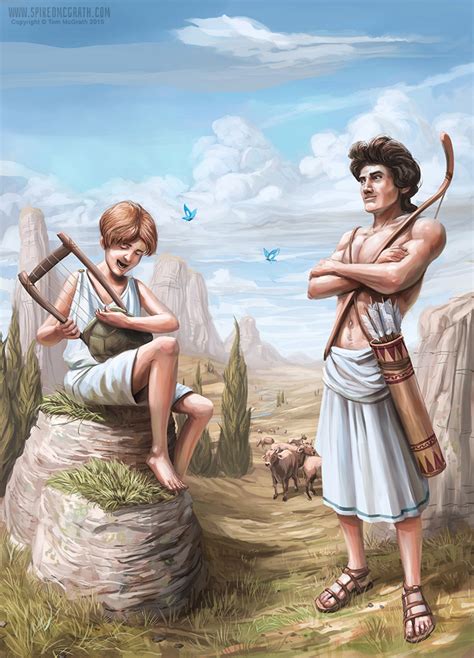hermes birth of apollo statue | hermes and apollo relationship hermes birth of apollo statue Hermes, the son of Zeus and the nymph Maia, was born in a cave on Mount Cyllene. His birth was marked by mischief and cleverness; even as an infant, he showcased . 25 Lvl.25: The Chefsbane Cometh: 30 Lvl.30: Of Cooks and Books: 35 Lvl.35: Diplomacy of the SkilletTop-Quality Medicinal & Recreational Cannabis Dispensary. Cultivate Las Vegas is a short trip and conveniently accessible from anywhere across Las Vegas, North Las Vegas, Spring Valley and Paradise, NV. We’re located just 1.5 miles from The Strip, right in the heart of Chinatown, and surrounded by numerous points of interest. Along with free .
0 · hermes and the infant dionysus
1 · hermes and apollo relationship
2 · apollo and hermes
RV/left ventricular (LV) ratio on CTPA is a clinical endpoint in clinical trials involving catheter-directed treatments in patients with intermediate-risk pulmonary embolism ( 7 – 11 ). Identifying RV strain on CTPA facilitates treatment decisions.
hermes and the infant dionysus
The original of this statue was found in 1877 by a team of German archaeologists excavating in the sanctuary of Zeus at Olympia in the Peloponnese (not to be confused with Mt. Olympus in northern Greece).Hermes and the Infant Dionysus, also known as the Hermes of Praxiteles or the Hermes of Olympia is an ancient Greek sculpture of Hermes and the infant Dionysus discovered in 1877 in the ruins of the Temple of Hera, Olympia, in Greece. It is displayed at the Archaeological Museum of Olympia. It is traditionally attributed to Praxiteles and dated to the 4th century BC, based on a remark by th.
hermes and apollo relationship
Hermes, the son of Zeus and the nymph Maia, was born in a cave on Mount Cyllene. His birth was marked by mischief and cleverness; even as an infant, he showcased .
Hermes and the Infant Dionysus is a celebrated ancient Greek sculpture attributed to the renowned sculptor Praxiteles. The statue depicts the god Hermes holding the infant Dionysus .
Hermes, Greek god, son of Zeus and the Pleiad Maia; often identified with the Roman Mercury. Hermes was associated with the protection of cattle and sheep. In the .
Hermes (/ ˈ h ɜːr m iː z /; Greek: Ἑρμῆς) is an Olympian deity in ancient Greek religion and mythology considered the herald of the gods. He is also widely considered the protector of human heralds, travelers, thieves, [2] merchants, .
Perhaps the most celebrated depiction of Hermes in Greek art is the magnificent statue by Praxiteles (c. 330 BCE) which once stood in the temple of Hera at Olympia and now . The Greek myth about how the infant Hermes made a lyre from a turtle's shell, and how after stealing a herd of cattle from his brother Apollo he got to keep them in exchange for .
Hermes, a son of Zeus and Maia, the daughter of Atlas, was born in a cave of Mount Cyllene in Arcadia, 1 whence he is called Atlantiades or Cyllenius; but Philostratus 2 .
apollo and hermes
The original of this statue was found in 1877 by a team of German archaeologists excavating in the sanctuary of Zeus at Olympia in the Peloponnese (not to be confused with Mt. Olympus in northern Greece).Hermes and the Infant Dionysus, also known as the Hermes of Praxiteles or the Hermes of Olympia is an ancient Greek sculpture of Hermes and the infant Dionysus discovered in 1877 in the ruins of the Temple of Hera, Olympia, in Greece. Hermes, the son of Zeus and the nymph Maia, was born in a cave on Mount Cyllene. His birth was marked by mischief and cleverness; even as an infant, he showcased his cunning nature by stealing Apollo’s cattle. This act set the stage for their complex relationship, intertwining themes of rivalry and brotherhood. C.Hermes and the Infant Dionysus is a celebrated ancient Greek sculpture attributed to the renowned sculptor Praxiteles. The statue depicts the god Hermes holding the infant Dionysus and is considered one of the masterpieces of classical Greek art.

HERMES (Hermês, Hermeias, Dor. Hermas), a son of Zeus and Maia, the daughter of Atlas, was born in a cave of Mount Cyllene in Arcadia (Hom. Od. viii. 335, xiv. 435, xxiv. 1; Hymn. in Merc. 1, &c.; Ov. Met. i. 682, xiv. 291), whence he is called Atlantiades or Cyllenius; but Philostratus (Icon. i. 26) places his birth in Olympus. Hermes, Greek god, son of Zeus and the Pleiad Maia; often identified with the Roman Mercury. Hermes was associated with the protection of cattle and sheep. In the Odyssey, however, he appears mainly as the messenger of the gods and the conductor of .Hermes (/ ˈ h ɜːr m iː z /; Greek: Ἑρμῆς) is an Olympian deity in ancient Greek religion and mythology considered the herald of the gods. He is also widely considered the protector of human heralds, travelers, thieves, [2] merchants, and orators.
Perhaps the most celebrated depiction of Hermes in Greek art is the magnificent statue by Praxiteles (c. 330 BCE) which once stood in the temple of Hera at Olympia and now resides in the archaeological museum of the site.
The Greek myth about how the infant Hermes made a lyre from a turtle's shell, and how after stealing a herd of cattle from his brother Apollo he got to keep them in exchange for giving the lyre to Apollo.
Hermes, a son of Zeus and Maia, the daughter of Atlas, was born in a cave of Mount Cyllene in Arcadia, 1 whence he is called Atlantiades or Cyllenius; but Philostratus 2 places his birth in Olympus.The original of this statue was found in 1877 by a team of German archaeologists excavating in the sanctuary of Zeus at Olympia in the Peloponnese (not to be confused with Mt. Olympus in northern Greece).Hermes and the Infant Dionysus, also known as the Hermes of Praxiteles or the Hermes of Olympia is an ancient Greek sculpture of Hermes and the infant Dionysus discovered in 1877 in the ruins of the Temple of Hera, Olympia, in Greece. Hermes, the son of Zeus and the nymph Maia, was born in a cave on Mount Cyllene. His birth was marked by mischief and cleverness; even as an infant, he showcased his cunning nature by stealing Apollo’s cattle. This act set the stage for their complex relationship, intertwining themes of rivalry and brotherhood. C.
Hermes and the Infant Dionysus is a celebrated ancient Greek sculpture attributed to the renowned sculptor Praxiteles. The statue depicts the god Hermes holding the infant Dionysus and is considered one of the masterpieces of classical Greek art.HERMES (Hermês, Hermeias, Dor. Hermas), a son of Zeus and Maia, the daughter of Atlas, was born in a cave of Mount Cyllene in Arcadia (Hom. Od. viii. 335, xiv. 435, xxiv. 1; Hymn. in Merc. 1, &c.; Ov. Met. i. 682, xiv. 291), whence he is called Atlantiades or Cyllenius; but Philostratus (Icon. i. 26) places his birth in Olympus.
Hermes, Greek god, son of Zeus and the Pleiad Maia; often identified with the Roman Mercury. Hermes was associated with the protection of cattle and sheep. In the Odyssey, however, he appears mainly as the messenger of the gods and the conductor of .Hermes (/ ˈ h ɜːr m iː z /; Greek: Ἑρμῆς) is an Olympian deity in ancient Greek religion and mythology considered the herald of the gods. He is also widely considered the protector of human heralds, travelers, thieves, [2] merchants, and orators. Perhaps the most celebrated depiction of Hermes in Greek art is the magnificent statue by Praxiteles (c. 330 BCE) which once stood in the temple of Hera at Olympia and now resides in the archaeological museum of the site. The Greek myth about how the infant Hermes made a lyre from a turtle's shell, and how after stealing a herd of cattle from his brother Apollo he got to keep them in exchange for giving the lyre to Apollo.
burberry archive scarf print shirt

CV-Online 1996 – 2024. CV-Online ir vieta, kur meklēt un atrast labākās darba un karjeras iespējas visās Baltijas valstīs - Latvijā, Lietuvā un Igaunijā.
hermes birth of apollo statue|hermes and apollo relationship


























